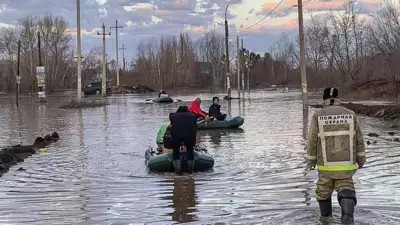
Ural River

09.04.2024
Ural River
|
For the Prelims:About Ural River,Important points, Tributaries of Ural River |
Why in the news?
Recently Russia declared a "federal emergency" due to flooding in the Ural River in Orsk in the southern Orenburg region.
Important points:
- According to news agency AFP, due to heavy rains a dam broke near Orsk, located in the southern Urals, close to Kazakhstan.
- According to officials, the dam can withstand water levels up to 5.5 meters (about 18 feet).
- In Russia, the Urals, Siberia, Volga and central regions have been most affected.
About Ural River:
- It flows through Russia and Kazakhstan along the continental border between Europe and Asia.
- It is also called Zayik River in the native Kazakh language.
- It originates from the Ural Mountains near Mount Kruglaya in Russia.
- It originates in the southern part of the Ural Mountains and after a long journey joins the Caspian Sea.
- It is the largest inland sea in the world, located between Europe and Asia.
- It is the third longest river in Europe after the Volga and Danube.
- It is the second most important water source for the Caspian Sea after the Volga River.
- About 60% to 70% of this river's water source comes from melting snow, while rainfall is a minor source.
- A prominent feature of the Ural River is its digital delta or tree-like structure, which can be seen as the river enters the Caspian Sea.
Tributaries of Ural River:
- It has a total of 58 tributaries, the most prominent of which are the Kushum, Derkul, Chagan, Irtek, Utva, Elek, Bolshaya Chobda, Kindle, Sakmara, Tanalyk, Salmis, Or, and Sunduk.
- The tributaries on the right are typical mountain rivers, while the tributaries on the left have flatland characteristics.
Source: The Times of India